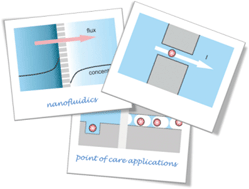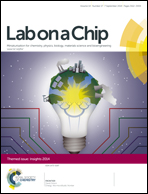Nanofluidics in point of care applications
Abstract
Nanofluidics is generally described as the study of liquid flow in or around structures of 100 nm or smaller, and its use for lab on a chip devices has now been actively studied for two decades. Here a brief review is given of the impact that this nanofluidics research has had on point of care applications. Four areas are identified where nanofluidics has brought the largest contributions: single nanopores, nanoporous membranes, nanoconfinement and the use of concentration polarization. The sometimes revolutionary developments in these areas are briefly treated and finally challenges and future perspectives are described.

- This article is part of the themed collection: Lab on a Chip: Insights Issue

 Please wait while we load your content...
Please wait while we load your content...